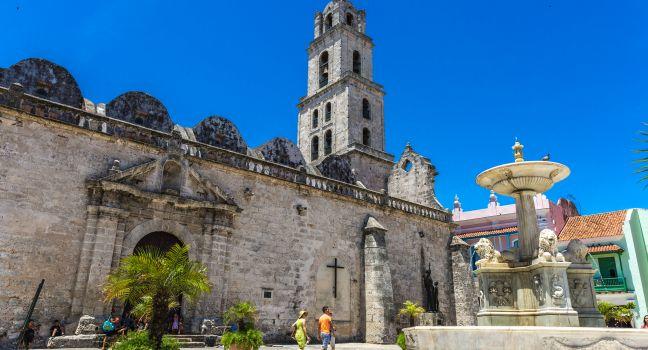El Templete
This Neoclassical, faux-Doric temple was built in 1828 on the site of the city's first Mass and its first cabildo (city council) meeting. The cabildo took place under a massive ceiba (kapok) tree, which was felled by a 19th-century hurricane. The present tree—planted in the little patio in front of El Templete in 1959, the year of the Revolution—is honored each November 19, the day celebrating Havana's founding. It's said during a special ceremony, if you walk three times around the tree and toss a coin toward it, you'll be granted a wish—provided, of course, that you keep your wish secret. El Templete is also the site of a triptych by French painter Jean-Baptiste Vermay portraying the first Mass, the first cabildo, and the municipal personalities who participated in the building's opening ceremonies. It's also home to the ashes of the painter and his wife, who—along with 8,000 other habaneros—were victims of the 1833 cholera epidemic.




